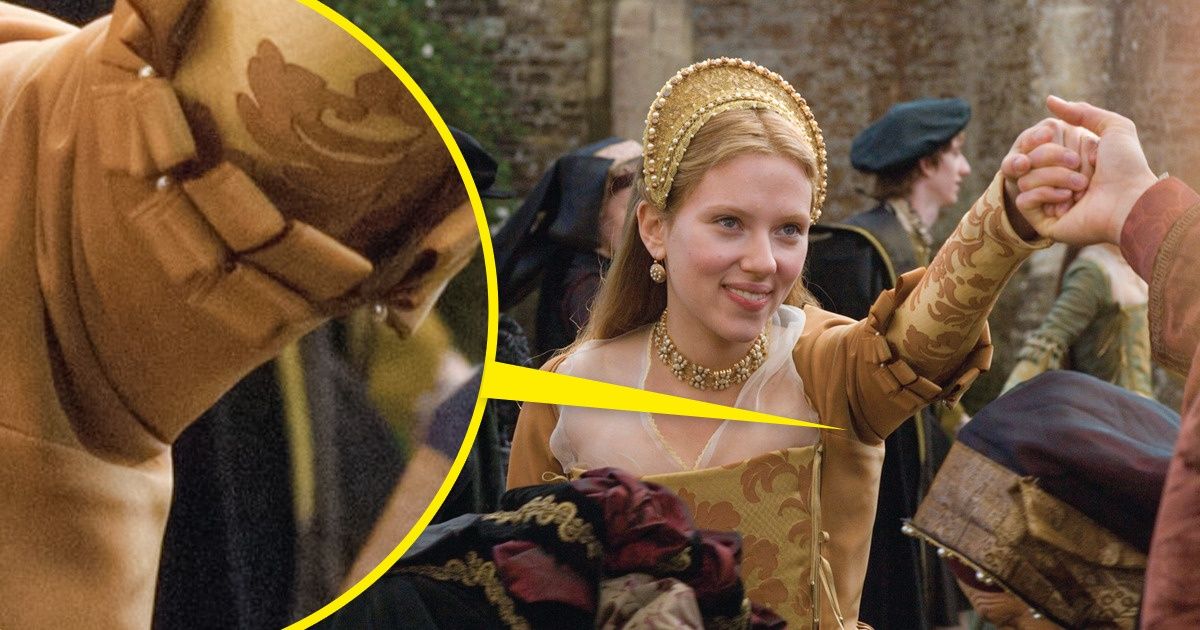I Refused to Tip $300 After Being Invited to a Dinner


In childhood, many of us read a lot of love stories about knights and dreamt about life in the royal court. Lush outfits, luxurious balls, brave warriors, and elegant ladies — it seemed that medieval monarchs lived in a fairy tale. And any ordinary person would give their all to be in their place.
We at Bright Side decided to check whether the life of royals in previous centuries was really as careless and wonderful as we think it was.
Many people know that noble ladies of the past used to take baths in chemises. But some of them went even further. Thus, Queen Caroline, the wife of the British King George II would take a bath not only while being fully dressed up — the tub itself would be covered with linen bed sheets to create the effect of sauna and to prevent the queen from catching a cold. The maids carefully washed her with flannel cloths, using soap solutions and the milk of mares.
After that, Caroline’s washing clothes were changed for a flannel nightgown, and she was ushered into the pre-heated bed. Some monarchs even placed their beds right in the bathroom to not get a chill or catch a cold after their bathing procedures.
One of the most powerful positions at the royal court in the Tudors’ England was called the “Groom of the Stool.” This courtier kept order in the private royal rooms and looked after the monarch’s wardrobe and even their finances. Sometimes the grooms of the stool could even control the spending of the cash.
But the name of the position comes from one of the most unpleasant duties — looking after and caring for the monarch while they were peeing and pooping. At those times, royals wouldn’t remain alone even while performing these personal tasks. A monarch could share their secrets, their wishes, and even ask for a piece of advice from the Groom of the Stool. And most of all, this person was well aware of how healthy the monarch was and how well they were feeling. This position was there during the times of Henry VIII, as well as the times of Elizabeth I.
Royals never stayed alone even in their private bedrooms. Apart from the king or the queen, there were several other courtiers who slept in the bedroom. The doors of the bedroom were hardly ever shut. The first queen who insisted on getting some kind of privacy was Victoria. With such a close neighborhood, monarchs could hardly hide any secrets from the people around them.
The ladies of the court of Elizabeth I were well aware of all the smallest details of her feminine health. And they would share this information with Her Majesty’s Most Honorable Privy Council for decent pay because the council wanted to be sure that the queen was capable of producing offspring.
The childbirth process of noble people in the olden days was associated with many rituals. The Queen’s main task was to give her husband and the country a successor. That’s why the health of both spouses, their meetings, and their relationship were vigorously discussed by the courtiers.
During the times of the Tudors, the Queen had to isolate herself in the bedroom for a while prior to childbirth and stay there until the baby appeared. All the windows in the room apart from one were shut by blinds. And no man could get into this room until the baby was born.
The French court had other traditions. The birth of Marie Antoinette’s first child was turned into a big performance. Apart from the future father, there were many other relatives who were present in the chamber.
The royal court could have several hundred people, and sometimes even more than 1,000. This huge entourage surrounded the monarch wherever they went. Normally, kings and queens would have several residences. Elizabeth I and her court used to move every several weeks but this wasn’t because of their love of traveling.
The reason for that was their inability to tolerate unpleasant smells. The thing is that the ancient sewage systems of palaces were far from being perfect. They required cleaning after several weeks of using them. The residence started to smell and the court would then move to another place. The servants who stayed there had to clean and freshen up all the chambers. Any castle was supposed to always be ready to accept monarchs and their big entourages.
The royal marriage was a crucial event that affected the lives of the entire country. Some monarchs got engaged at a very young age. Others would choose their spouses themselves. Appearance played a big role in this task. That’s why many monarchs demanded to see a portrait of their potential wives.
In previous centuries, monarchs’ spouses didn’t possess a lot of power. When it came to their power in court, they only had a few things they could leverage with and their wardrobe was one of them. Catherine of Aragon and Anne Boleyn used outfits in their fight for Henry VIII’s heart. Catherine tried to seek help from her own wardrobe and even increased her spending for new outfits by 50%.
Courtiers supporting a certain royal person demonstrated this with their outfits as well. For example, the followers of Catherine wore English hoods, while the ladies who supported Anne Boleyn gave their preference to the French variant of this headwear.
Before the appearance of washing machines and washing powders, cleaning clothes was an uphill task. Still, royals appreciated cleanliness and neatness at all times. Each monarch had a laundress who was in charge of the condition of their linens. All of the dirty toilet items and bedclothes were sent to her.
Mostly, they were linen items that were washed. Other wardrobe items were cleaned with a brush, rubbed with white bread, and cleaned from stains with the help of natural ingredients. Almost all outfits were equipped with linen padding, which was carefully washed regularly.
The personal laundress usually knew many secrets of the monarchs. And her career and her peaceful life in the court depended on her ability to keep them to herself.
In the Tudors’ times, it was a matter of pride to have clean linens each day. People, especially nobles, would have enough clean linens for each day of the week, if not more.
Their clothes were washed using natural cleaning products. In order to remove bad smells, they were dried on top of rosemary and lavender bushes. Sometimes they were put right on the grass. It gave the fabric a subtle aroma, while sun rays helped to remove the stains left on clothes.
The trends for shoes also changed from century to century. Starting from the 16th century, duck-bill shoes came to the peak of fashion.
It was a rare occasion to actually see ladies’ shoes because there were strict regulations on the length of dresses. But Queen Elizabeth I specifically asked to have her skirts altered so that everyone could admire her small feet and slim ankles.
In the 18th century, Marie Antoinette started a new hair trend called poufs. These intricate tall constructions, decorated with flowers, feathers, and jewels, had been ridiculed many times. Moreover, they cost a lot of money. But ladies worked hard on creating poufs not only for the sake of beauty. These hairstyles had a certain meaning and helped women demonstrate their relationship to certain events that social norms didn’t let them speak about out loud.
Thus, Marie Antoinette created a special hairstyle on the occasion of her husband Louis XVI’s vaccination against smallpox. At those times, vaccination was considered a dangerous thing. With the help of her pouf, Marie Antoinette expressed her personal opinion regarding this medical procedure. The more popular her hairstyle became, the more willingly the residents of France were getting vaccinated against this dangerous disease.
The Hennin is one of the most popular pieces of headwear from the Medieval period. Even today, it is an obligatory attribute of a princess’s carnival outfit. These cones were often made of starched linen and were overlaid with silk.
The headwear was able to stay on the head with the help of hair that was placed into the cone or thanks to the special loops that were worn on the ears. In any case, it was not easy to move with this construction on the head. A special loop was attached to the front part of this headwear which helped to fix or hold the hennin during strong winds.
Royals have been trendsetters since ancient times. They introduced new fashion ideas and set strict rules. However, one required certain agility to be able to wear some of these outfits.
For example, during the times of Tudors, one-piece dresses didn’t exist at all. They all consisted of separate elements including a petticoat, farthingale, corset, pleated sleeves, etc. They were either sewn together or secured by pins. That’s the reason why noble ladies had to walk slowly and elegantly and sit down, avoiding any sharp movements.
What do you think of the things that prevailed in the lives of kings and queens from the past centuries — do they sound romantic or more like hardships?
Bright Side has its own podcasts now. Take cool articles with you and listen to new stories whenever and wherever you want.











